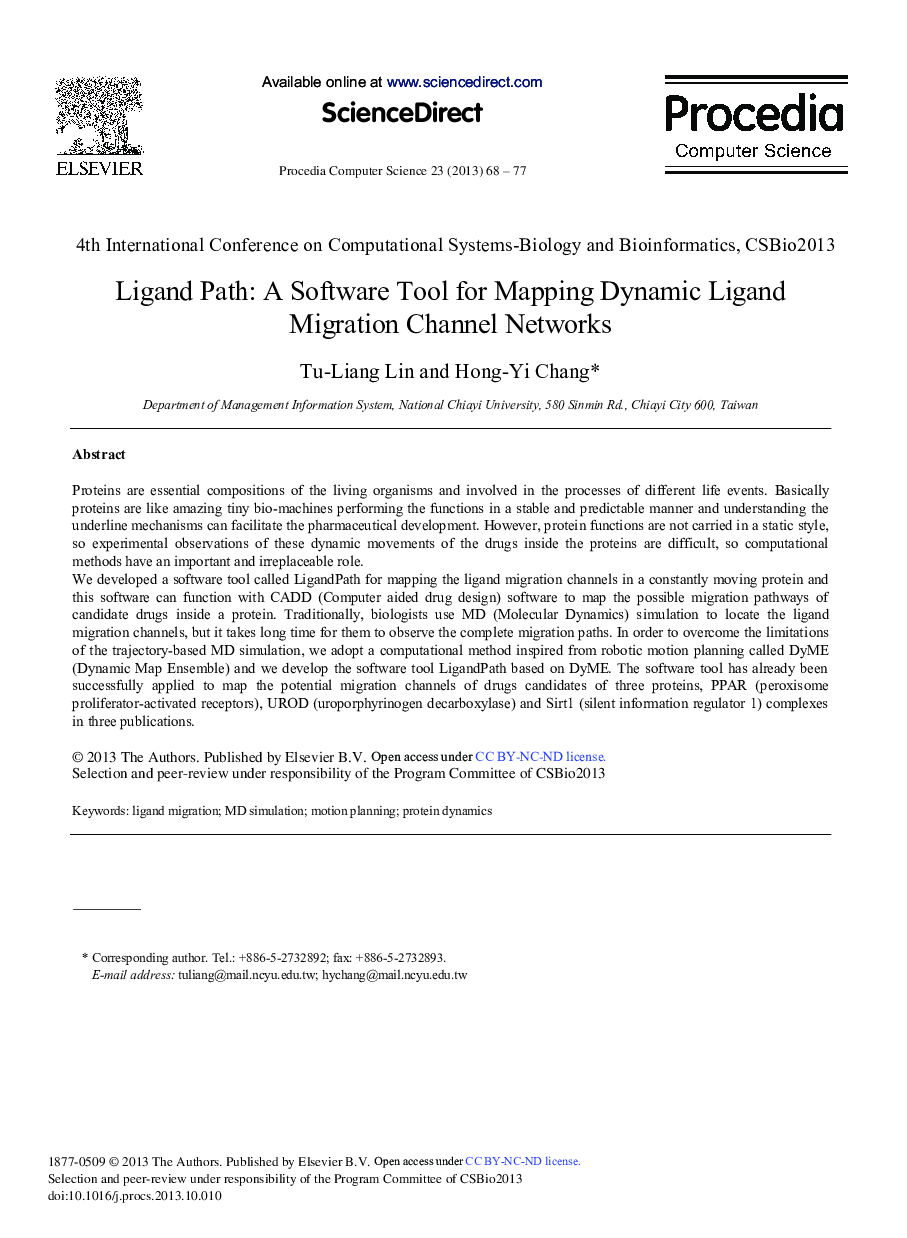| کد مقاله | کد نشریه | سال انتشار | مقاله انگلیسی | نسخه تمام متن |
|---|---|---|---|---|
| 490362 | 707359 | 2013 | 10 صفحه PDF | دانلود رایگان |

Proteins are essential compositions of the living organisms and involved in the processes of different life events. Basically proteins are like amazing tiny bio-machines performing the functions in a stable and predictable manner and understanding the underline mechanisms can facilitate the pharmaceutical development. However, protein functions are not carried in a static style, so experimental observations of these dynamic movements of the drugs inside the proteins are difficult, so computational methods have an important and irreplaceable role.We developed a software tool called LigandPath for mapping the ligand migration channels in a constantly moving protein and this software can function with CADD (Computer aided drug design) software to map the possible migration pathways of candidate drugs inside a protein. Traditionally, biologists use MD (Molecular Dynamics) simulation to locate the ligand migration channels, but it takes long time for them to observe the complete migration paths. In order to overcome the limitations of the trajectory-based MD simulation, we adopt a computational method inspired from robotic motion planning called DyME (Dynamic Map Ensemble) and we develop the software tool LigandPath based on DyME. The software tool has already been successfully applied to map the potential migration channels of drugs candidates of three proteins, PPAR (peroxisome proliferator-activated receptors), UROD (uroporphyrinogen decarboxylase) and Sirt1 (silent information regulator 1) complexes in three publications.
Journal: Procedia Computer Science - Volume 23, 2013, Pages 68-77